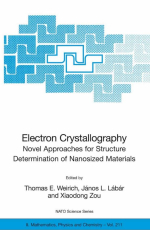Добрый день, Коллеги. Важное сообщение, просьба принять участие. Музей Ферсмана ищет помощь для реставрационных работ в помещении. Подробности по ссылке
Electron crystallography. Novel approaches for structure determination of nanosized materials / Электронная кристаллография. Новые подходы к определению структуры наноразмерных материалов
The discovery of electron diffraction in the laboratories of C.J. Davisson and G.P. Thomson in 1927 certainly ranks as one of the monumental discoveries in the history of science. Soon after this invention, it was realised that electrons - like X-rays - are diffracted by the atoms in matter and thus can be used for structure determination. Because the attainable scattered intensities for electrons are about 106 times larger than for X-rays, electron diffraction allows us to study the interior structure of matter down to a few cubic-nanometers in size. This is far beyond the capabilities of X-ray crystallography or even a modern synchrotron. However, with increasing understanding of the electron scattering process, in particular by development of n-beam scattering theory during the 1950s of the past century, it became general knowledge that it could normally not be assumed that the kinematical or single-scattering approximation holds even for very thin crystals. For this reason nearly all activities in this direction declined within a few years from that time, even though the groups of Z.G. Pinsker, B.K. Vainshtein and B.B. Zvyagin in Russia had proved the feasibility of this approach since about 1940. While X-ray diffraction turned over the following years into a powerful quasi-automatic method for structure determination, structure analysis by electron diffraction was not seriously developed further for a period of more than twenty years. It took until 1976 to perform the first structure determination by direct phasing methods from electron diffraction data of an organic compound by D.L. Dorset & H. Hauptman, and another eight years for the first ab-initio structure determination of a heavy-metal oxide from high-resolution electron microscopy images by S. Hovmöller and co-workers. Despite these achievements, the earlier skepticism against structural results from electrons continued, and remained a common mindset until a few years ago. <...>




